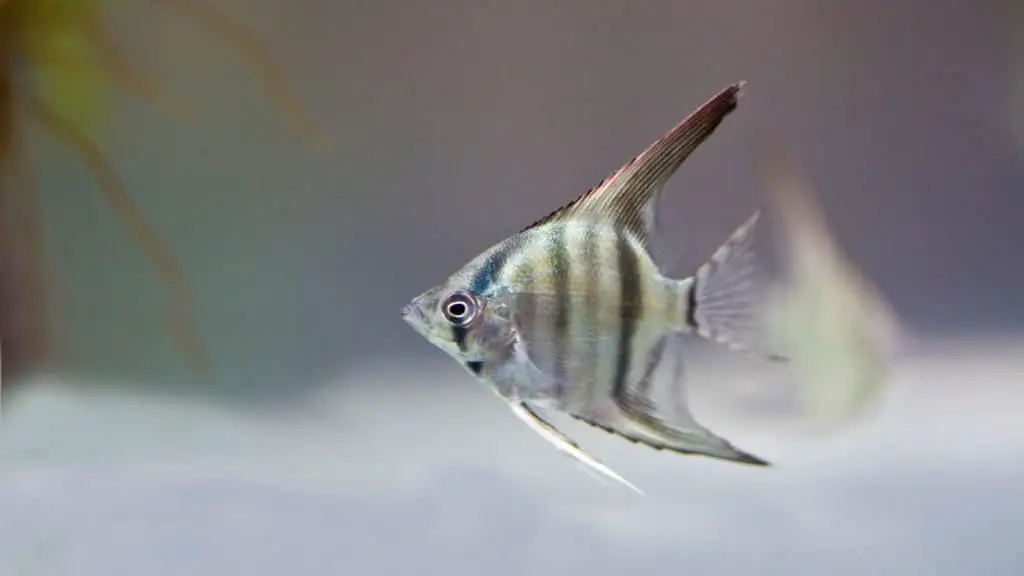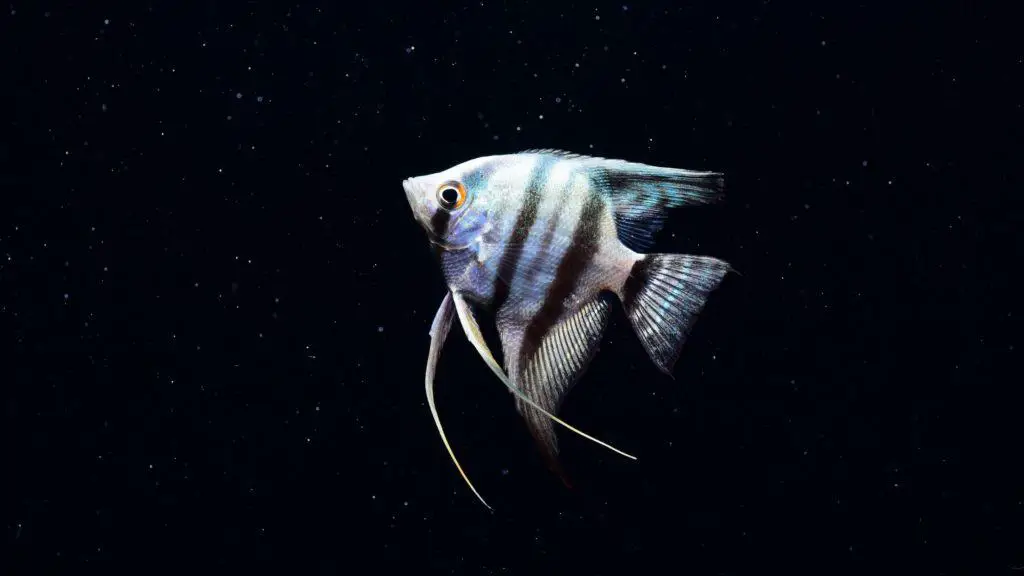Do you love angelfish? If so, you’re in for a treat! In this blog post, we will share some fun and interesting facts about these beautiful fish. Angelfish are found in many different colors, including blue, yellow, orange, and red. They can grow up to 10 inches long and live for up to 10 years. Angelfish are native to the Amazon River Basin in South America, but they can now be found all over the world.
Table of Contents
12 Fascinating Angelfish Facts
Angelfish are known for their long trailing fins which nicely contrast with their brightly colored bodies and they make an excellent showpiece in any home aquarium. Keep reading below for more interesting facts about angelfish that may surprise you!

Freshwater Angelfish are part of the Cichlid Family
Angelfish are a freshwater species of the cichlid family that originate from South America. This group includes other well-known fish, such as Oscars, Jack Dempseys, parrotfish, and discus.
They have a reputation for being aggressive
They are known for their colorful markings and aggressive behavior when defending their territory.
If you are considering keeping an angelfish as a pet, make sure to provide them with plenty of room in their aquarium and be prepared for some occasional squabbles with other fish.
They can grow up to ten inches long
Angelfish can reach a length of up to ten inches, making them one of the larger freshwater fish species.
On average, angelfish will reach 6 inches in length when they are mature, which is roughly a year and a half old. They can grow to nearly 10 inches in very huge tanks if not overcrowded, although this is rather unusual in captivity.
They are omnivores and eat a variety of foods, including plants and other small fish.
Angelfish will eat a variety of live and frozen foods, including brine shrimp, bloodworms, daphnia, and tubifex. They will also eat plants, so it’s important to provide a balanced diet that includes both animal and plant material.
Angelfish can also eat other fish that are in the tank that are smaller, such as fry and tetras so it’s important to be aware of this before adding them to your community tank!
It’s best to keep angelfish with other angelfish
The angels are often regarded as communal fish, which means they can cohabit with a wide range of other tropical species when young. Angels become more territorial and aggressive as they mature, therefore it’s typically preferable to keep them in their own tank as adults.
Angelfish can also get competitive with each other during breeding seasons, which is generally when they’re most aggressive. Males may fight amongst themselves over females, and females might become violent while defending their young from other male and female fish pursuing a meal.
They have relatively complex care requirements and are better suited to more experienced fish keepers
Angels are delicate and sensitive, so they thrive best in the cleanest, most spacious tank you can provide. Make sure your filtration system doesn’t create excessive currents in the water, because angels aren’t the most nimble swimmers. The proper water conditions may help to minimize stress on your angels and keep them healthier and happier.
The angelfish’s optimal water temperature is between 74 and 78 degrees Fahrenheit with an average pH range of 6.5 to 6.9

Unfortunately, they are prone to a common disease called Ich
Angelfish are highly vulnerable to ich (ick), which is an opportunistic parasitic illness that can strike at any time the tank’s circumstances are correct, and angelfish are particularly susceptible. The parasite may be transmitted from one fish to another, and it can exist in the aquarium on its own before attaching itself to a fish
Angelfish are oviparous
Angelfish are oviparous, meaning they lay eggs. Females will deposit their eggs on a flat surface such as a leaf or rock in the tank. The male then fertilizes them and along with the female, guards them until they hatch.
The eggs will hatch in about two days, and the fry (baby fish) are then free-swimming. The parents will continue to care for them until they reach a size where they can fend for themselves.
Male and Female Angelfish look the same
Except for when the female is ready to breed, you can’t tell a male angel from a lady angelfish by looking at them.
The papilla is an organ in both males and females that exists between the anal and ventral fins. When the female becomes gravid, which means she is carrying eggs, her papilla grows somewhat larger and has a blunt end. When a gravid female is sensed by the male, his papilla also grows somewhat bigger, but it tapers to a point.
Also, when the female is in breeding condition, her body becomes more plump and rounded.
There are lots of different verities and colors
The first freshwater angelfish was a typical silver angelfish. However, the original color has been altered through mutations, and breeders have taken advantage of them to develop a wide range of interesting and beautiful species.
There are lots of different colors, including but not limited to;
- Black and whites
- Golds
- Half blacks
- Leopards
- Marbles
- Philippine Blue
- Veils
- Whites
- Zebras
Not all angelfish are freshwater fish, you can also get marine angelfish
Whilst freshwater angelfish are very common, there are also many types of marine angelfish, and each has their own specific care requirements. Marine angelfish come in a variety of colors and they can be found in salt water and brackish water habitats.
If you believe you’re ready for the demands of keeping a saltwater aquarium, you’ll discover fascinating marine angelfish at any aquarium shop that specializes in saltwater fish.

Summary
Despite their reputation as a difficult fish to keep, angelfish are relatively easy to maintain. They aren’t nearly as hard to take care of as some of their other cichlid relatives, such as discus. Give them the biggest tank you can, keep the water clean, and feed them a diet that includes meat. If you can do that, you’ll be rewarded with a beautiful, interesting and intelligent specimen.
Let us know in the comments below if we have missed any facts about angelfish and we will update our article.

